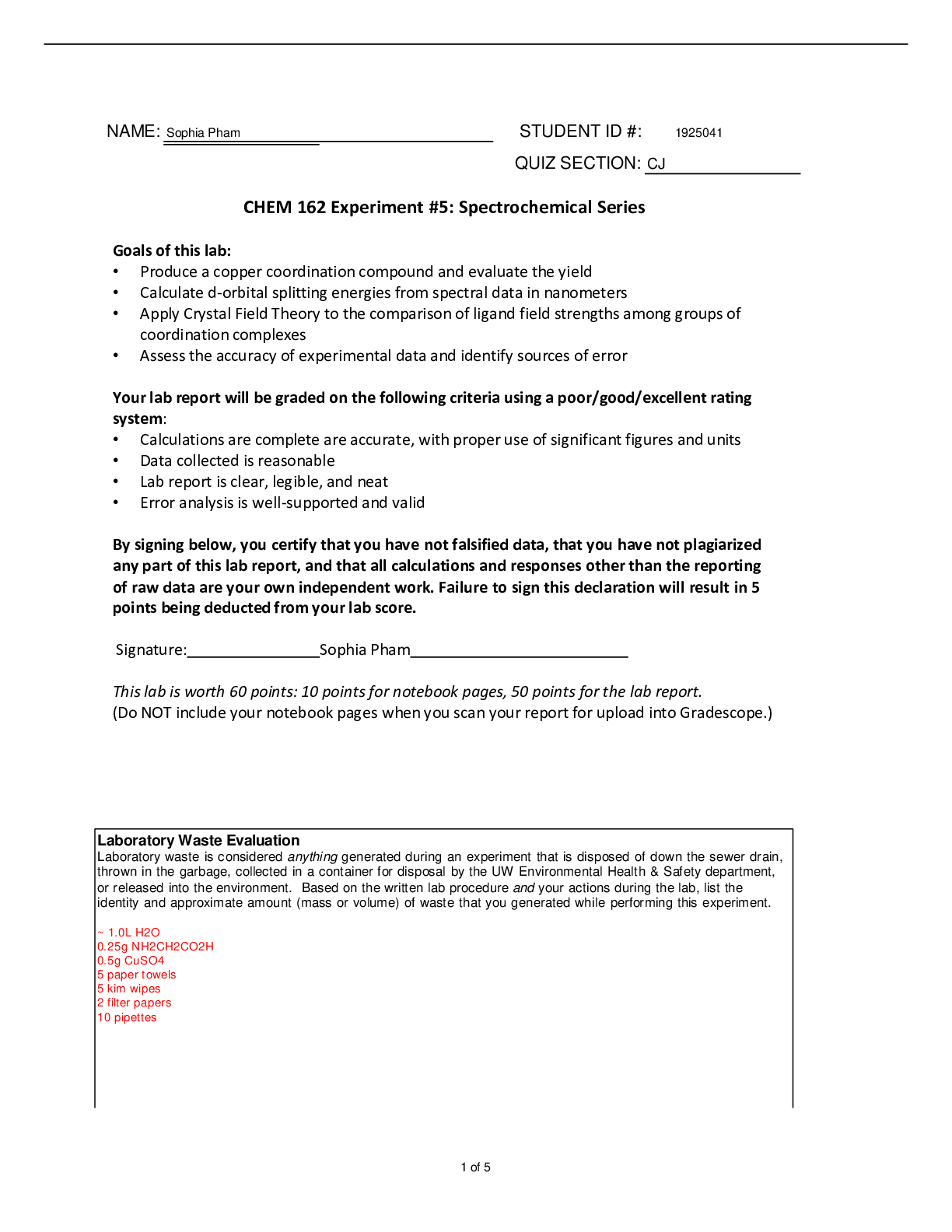Chemistry > Lab Report > Chem1114 Lab 5 Atomic Spectroscopy Remote Version Su20 (All)
Chem1114 Lab 5 Atomic Spectroscopy Remote Version Su20
Document Content and Description Below
OBJECTIVES - To learn to use a spectroscope to study the lines in the emission spectra of atoms. - To calibrate the spectroscope in order to convert scale readings into wavelengths; to understand t... he calibration process. - To examine the spectral lines of hydrogen in the visible region and correlate these lines to hydrogen electronic transitions. - To study the emission spectra of metals present in salts. INTRODUCTION Spectroscopy The interaction of light with matter produces many interesting phenomena that are easily observed on a daily basis. For example, the color of the sky is due to sunlight being scattered by molecules in the air: the shorter-wavelength blue light is scattered more than longer-wavelength red light thus causing the sky to appear blue. Similarly, a rainbow after a storm is the result of light passing through prismlike raindrops, which break the light into its component colors. A dilute solution of powdered milk (which contains protein macromolecules that can scatter light) appears opalescent blue. In this experiment, you will study the interaction between light and atoms. For most atoms at room temperature, the electrons occupy the lowest allowed energy level, known as the ground state. When atoms are energized by an electric discharge, by a flame, or by light, electrons are excited from the lower level to higher energy levels known as excited states. These excited atoms can emit photons of a particular wavelength and drop down to lower energy levels. If the emitted light is passed through a narrow slit and then through a prism or diffraction grating, an emission spectrum is observed. According to quantum theory, the energy content of an atom is quantized; that is, the energy can have only certain discrete values. The allowed energy levels are characteristic of each particular kind of atom. Through the technique of emission spectroscopy, the allowed energy levels can be probed. Quantum theory describes light as being composed of tiny bundles of energy called photons. Different colors of light are produced by photons of different wavelengths. The energy of a photon E is related to its wavelength λ by the equation: [Show More]
Last updated: 2 years ago
Preview 1 out of 12 pages

Buy this document to get the full access instantly
Instant Download Access after purchase
Buy NowInstant download
We Accept:

Reviews( 0 )
$7.00
Can't find what you want? Try our AI powered Search
Document information
Connected school, study & course
About the document
Uploaded On
Mar 30, 2021
Number of pages
12
Written in
Additional information
This document has been written for:
Uploaded
Mar 30, 2021
Downloads
0
Views
88




.png)









